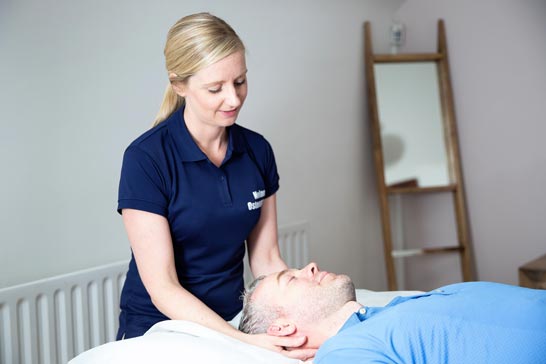Understanding Sciatica and How Osteopathy Can Help
September 1, 2016
Maria Nolan

Sciatica is quite common in the UK but it is important to note that sciatica is a set of symptoms rather than a condition. The symptoms can vary from person to person and even change in the same person. Some of the most common symptoms tend to be;
- Persistent pain down one buttock or leg. It is unusual for the pain to be down both legs at the same time
- Pain that is typically worse when sitting down due to irritation of the nerves
- Weakness, numbness or pins and needles, which can make it difficult to stand or to move the leg, foot and toes
- A sharp stabbing pain or a burning, tingling sensation
- Some patients also describe an electric shock or “running water” type pain
The pain can be constant or intermittent and can vary between a mild ache to being extremely painful and can make even simple tasks very difficult and painful.
What causes Sciatica?
Sciatica is caused by the compression or irritation of the sciatic nerve. The sciatic nerve is the largest single nerve in the body and consists of individual nerve roots that branch out from either side of the spine in the lower back, which then combine to form the sciatic nerve. It runs from the lower back, into the buttocks and descends down the back of each leg to the feet and toes. As mentioned earlier, sciatica is not a medical diagnosis in itself but is instead caused by another underlying medical condition. Some examples of conditions that can cause sciatica include;
- Structural changes to the spine as we get older
- Ligament or muscle strains around the spine
- A slipped or herniated disc, which puts pressure on the sciatic nerve
- Certain bone diseases, such as Paget’s disease
- Piriformis Syndrome – The piriformis muscle attaches to the pelvis and hip and if this muscle goes into spasm, it can lead to compression or irritation of the sciatic nerve
It is unusual for sciatica to occur before age 20 but it does become more prevalent in middle aged adults.
How can it be treated?
With the correct advice and treatment, the majority of people who suffer with sciatica typically get better within a few weeks or months. Seeing an osteopath or other qualified medical practitioner is advised to learn how to reduce the pain, but also to check that there is not a more serious underlying medical issue.
It is important to point out that there is no common technique or one size fits all approach to treating sciatica and managing patients’ expectations becomes hugely important. Every individual case is different and the patient becomes an important part of managing the condition themselves, through an appropriate treatment plan, which may include stretching exercises and postural adjustments that you can do at home.
Because sciatica is caused by an underlying medical condition, osteopathic treatment will focus on targeting the cause of symptoms rather than just the symptoms. The main aim is to reduce pain and restore function. The treatment will depend on the cause of the problem (see above) and may include using gentle techniques;
- to improve mobility in the lumbar (lower back) spine
- targeting tension points in the back and buttock muscles, especially the piriformis muscle.
- it may involve massage techniques on the hamstrings and the calf muscles to help alleviate tension on the sciatic nerve
We have also had very good results in treating sciatica through medical acupuncture and electrotherapy.
Interested in finding out more about Sciatica?
Please feel free to give us a call or email us at enquiries@nolanosteopathy.co.uk if you’d like to speak to one of our highly qualified and fully insured osteopaths.
It is so important that you feel comfortable visiting an osteopath that feels right for you. That’s why we offer all our patients a COMPLIMENTARY 15 minute meeting with one of our osteopaths.
Maria





